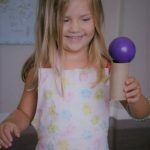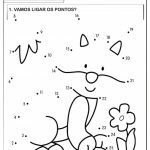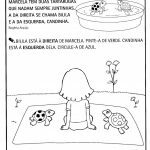Very interesting. Thanks!
Doubts about how to work motor coordination in early childhood education, I selected some activities. Fine Motor Coordination and Gross or Broad Motor Coordination.
Gross Motor Coordination - Global (broad) motor coordination
Gross motor coordination deals with the movements of the upper and lower limbs, it is related to the general organization of rhythm, balance, general perceptions and the development of kid.
Fine motor coordination
Fine motor coordination deals with the movements performed by the hands and fingers and also their connection between the hand and the eye, visual-motor coordination. This development is of great relevance for writing and requires the child to have good muscle tone in the upper and lower limbs.
Many activities can be carried out with this purpose, including coordination is often worked without be aware of the most common activities of daily life, so I leave you with some activity tips:
folding paper;
rip paper;
roll up paper;
punch paper with hole punch;
stamping paper;
Below you can check some activities related to the development of global or fine motor coordination, if want to learn more about the subject soon after the activities you find some concepts that can be useful.
GLOBAL PSYCHOMOTOR ACTIVITIES
COMES AND GOES
objective – Develop broad, visual-motor coordination, attention and muscle tone
Activity – The activity is developed with a toy that must be used in pairs, the toy can be developed with pet bottles, adhesive tapes, rings and wires or purchased in stores specialists.
Activity development – Participants in the activity must hold the ends, in the plastic rings, giving impulse, when opening their arms, to the object for the other end.
ROPE
objective – Develop broad motor coordination, body schema, stimulate spatial and temporal orientation, expand balance, laterality and improve muscle tone.
Activity – The activity is carried out with a rope measuring four meters on average.
Development of activities – It can be used on the floor, where the child walks barefoot on the rope, with open arms, trying to maintain balance.
Taking advantage of the same activity, but now the child will walk backwards on the rope.
Still stretched out on the floor, the child jumps with both feet together to left and right consecutively.
The rope can be lifted four inches off the ground for the child to jump from side to side.
The rope can be used by the pair as a tug-of-war, in the middle of the space used must have a mark on the floor, to visualize who is winning the tug-of-war.
Children can jump rope.
hula hoop
objective – Develop broad motor coordination, body schema, stimulate spatial and temporal orientation, expand balance, laterality and improve muscle tone.
Activity – The activity is developed with four hula hoops on average.
Development of activities – One child must hold the hula hoop, while another one comes crawling to go inside the hula hoop.
Rotate the hula hoop around the waist and other parts of the body such as neck and arm.
With some hula hoops lined up side by side on the floor, walk with your left leg on the left hula hoop and your right leg on the right hula hoop.
Still with the hula hoops on the ground, jump with both feet from one hula hoop to another.
With a hula hoop just jump in and out.
Play with the hula hoop in your hand, turning it like a wheel.
Pass the hula hoop over the entire body starting at head height.
FINE PSYCHOMOTOR ACTIVITIES
MATCHING
objective – Develop fine motor skills, visual-motor skills, body schema, stimulate spatial orientation, laterality and improve muscle tone.
Activity – The activity is developed with tacks prepared with plasticized cardboard and figures or purchased ready-made.
Activity development – The child must work the basting in a free way or guided by the teacher. It is possible to work the tack associating other knowledge such as geometric shapes, numbers, letters, animals, means of transport.
SPONGES
objective – Develop fine motor skills, visual-motor skills, body schema and improve muscle tone.
Activity – The activity is carried out with a basin with water and several colored sponges, with different textures/hardness.
Development of activities – Put the sponges in the water and ask the child to remove them one by one, squeezing them well, removing all the water from the sponge.
CLAMP
objective – Develop fine motor skills, visual-motor skills, body schema, laterality and improve muscle tone.
Activity – The activity is carried out with two (or three) containers, one with objects and the other empty, and medium size tweezers.
Development of activities – The child must transport the objects that are in a container with the tweezers to another empty container. It can also be done by asking the child to place the objects in the left or right container.
BUTTON BUTTONS
objective – Develop fine motor skills, visual-motor skills, body schema, laterality and improve muscle tone.
Activity – Felt board with nailed buttons and colored felt cutouts in the shape of flowers.
Development of activities – The child will receive the plate with the flowers attached to the buttons to check the final result of the activity, the felt flowers are removed and the child starts to button the buttons on the buttons.
NOODLE BOX
objective – Develop fine motor skills, visual-motor skills, body schema and improve muscle tone.
Activity – A box lined with neutral material with holes and penne noodles will be used.
Development of activities – The child receives the box lined with holes and the noodles and is guided to place the noodles in the various little holes in the box.
Did you like it? Share this post on your social network
 PSYCHOMOTOR ACTIVITIES FOR EARLY CHILDHOOD EDUCATION
PSYCHOMOTOR ACTIVITIES FOR EARLY CHILDHOOD EDUCATION
 MOTOR COORDINATION ACTIVITIES
MOTOR COORDINATION ACTIVITIES
 2 CLASS PLAN SPACE NOTION EARLY CHILDHOOD EDUCATION
2 CLASS PLAN SPACE NOTION EARLY CHILDHOOD EDUCATION
 10 EDUCATIONAL ACTIVITIES OF CONNECTING POINTS
10 EDUCATIONAL ACTIVITIES OF CONNECTING POINTS
 Play and Laterality Activities for Early Childhood Education
Play and Laterality Activities for Early Childhood Education
 How To Do 30 Painting Techniques
How To Do 30 Painting Techniques
Very interesting. Thanks!
activity with collage and painting kindergarten
This site uses Akismet to reduce spam. Learn how your comment data is processed.
